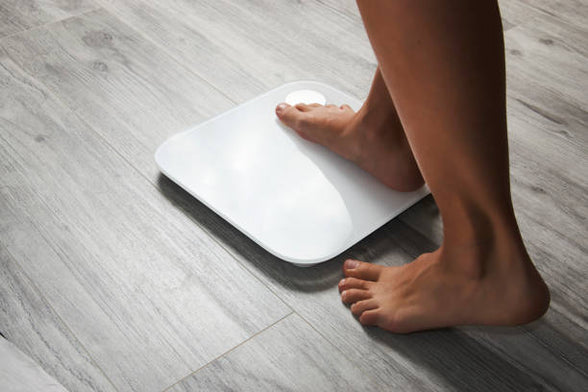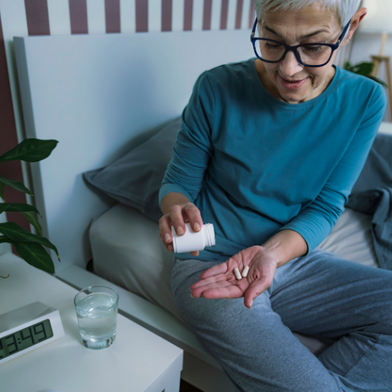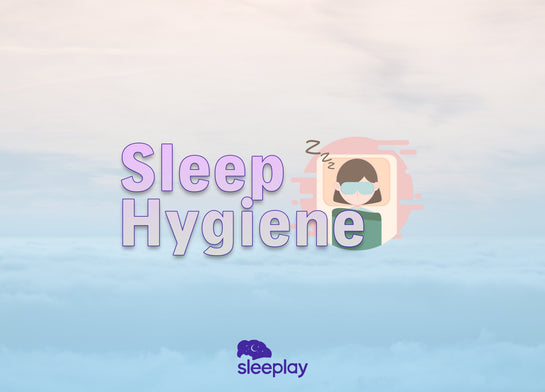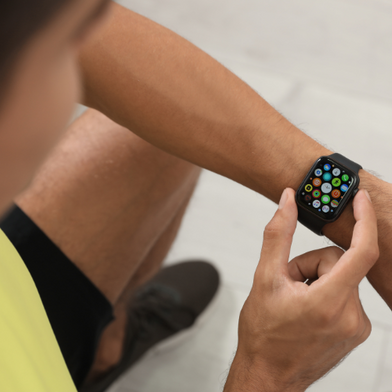9 Breathing Exercises For Better Sleep
How nice if we could all be "morning people" and wake up every day feeling refreshed and alert.
The reality is, sometimes, falling asleep can be difficult, even if you're really tired. Thus, many of us live by the motto: "Please, don't talk to me before my morning coffee."
It seems getting good quality sleep is a luxury, and it's understandable.
It's hard to unwind from a long day of responsibilities and automatically get good quality sleep.
However, sleep is an essential component of a healthy lifestyle, and without it, you'll quickly burnout, at work, in your relationships, and your health will suffer.
One of the keys to getting into a state in which your body can prepare for sleep is to simply relax. Easier said than done, right? Well...it actually is a lot simpler than you'd think.
We won't necessarily promise to make all your worries go away, but we will help you find natural and practical ways to get your body into a preferable relaxed state so you can achieve better sleep.
According to the American Psychological Association, at least 40 million Americans suffer from over 70 different sleep disorders, and 60% of adults report having sleep problems a few nights a week or more.
Most of us need at least 7-8 hours of restful sleep a night to keep our bodies and brains healthy, yet sleep deprivation is on the rise, compromising not only our immune system but our mood and personal relationships as well.
Our busy, fast-paced lives force us to stay awake longer, relying on caffeine and even prescription stimulants to keep functioning. There is this hidden glorification of those who function well without sleep: "You snooze, you lose."
Whether it's stress, job burnout, a new baby at home, or a sleep disorder such as sleep apnea that's keeping you awake, it's important to find natural and practical ways to help you relax and enter a calming stage that soothes you to sleep.
Numerous breathing exercises can help control sleep apnea, resulting in a better night's sleep. Since breathing is something we can control and regulate, it is a useful tool for achieving a relaxed and clear state of mind.

Breathing Exercises
Breathing exercises are a natural tranquilizer for the nervous system, unlike tranquilizing drugs, which are often effective when you first take them but then lose their power over time. Breathing, in turn, is a practice you can continue your entire lifetime and will bring you incredible health benefits.
Breathing is also considered a workout for the smaller muscles in your mouth, throat, soft palate, and tongue that may help keep your airways open and reduce sleep apnea symptoms.
If you're that someone who sleeps 5 hours a night and then sips espresso all day or takes medications to stay awake, you need to reconsider your sleeping habits.
Here are 9 breathing exercises to help relax, sleep better, and achieve greater wellness.
1. The 4-7-8 Exercise
The 4-7-8 breathing exercise is simple, fast, and efficient. You can do this exercise in any position. Place the tip of your tongue against the ridge of tissue just behind your upper front teeth, and keep it there through the entire breathing exercise.
- Exhale completely through your mouth, making a whoosh sound.
- Close your mouth and inhale quietly through your nose to a mental count of four.
- Hold your breath for a count of seven.
- Exhale completely through your mouth, making a whooshing sound to a count of eight.
- This is one breath. Now inhale again and repeat the cycle three more times for a total of four breaths.
Note that with this breathing technique, you always inhale quietly through your nose and exhale audibly through your mouth. The tip of your tongue stays in position the whole time. Exhalation takes twice as long as inhalation.
Dr. Andrew Weil developed this breathing technique as a pranayama variation, an ancient yogic practice that helps people relax and replenishes oxygen in the body.
With practice, you can slow it all down and get used to inhaling and exhaling more and more deeply.
2. Breath Counting
Sit in a comfortable position with the back straight and head inclined slightly forward. Gently close your eyes and take a few deep breaths. Then let the breath come naturally without trying to control it. Ideally, it will be quiet and slow, but depth and rhythm may vary.
- To begin the exercise, count "one" to yourself as you exhale.
- The next time you exhale, count "two," and so on up to "five."
- Then begin a new cycle, counting "one" on the next exhalation.
Never count higher than "five," and count only when you exhale. You will know your attention has wandered when you find yourself up to "eight," "12," even "19."
This simple breathing exercise can get you back to sleep in no time, and it beats counting sheep.
3. Alternate nostril breathing exercise
This breathing exercise is a common yogic practice that helps open the airways and reduce stress so you can arrive at a calm mindset and fall asleep easier.
- Place your left hand on your knee if sitting, or thigh if lying down, and your right thumb against your nose.
- Exhale fully and then close the right nostril.
- Inhale through your left nostril.
- Open your right nostril and exhale through it while closing the left.
- Continue this rotation for 5 minutes, finishing by exhaling through your left nostril.
4. Diaphragmatic breathing
Your diaphragm is the large muscle at the base of your lungs that is primarily responsible for breathing.
- Begin by breathing into your belly rather than your chest. It may help put your hand on your stomach so you can feel it rise and fall. You can do this lying down or sitting up.
- Take a deep breath and hold it for a few seconds before releasing it.
- Continue this pattern for 5 to 10 minutes, or however long it takes you to feel ready for sleep.
5. Body Scan
This technique combines focusing on your breath with relaxing your muscles and feeling more in tune with your body and the areas where you localize stress helping you achieve a healthier breathing pattern.
- As you lay down in bed, scan through your body, noticing how it feels. You may start from the head and work down toward the toes, or vice versa.
- When you notice an area of tension, direct your breath to that spot. See if you can feel the tension leave and the body part relax.
6. Box Breathing
This exercise, also known as square breathing, brings your breathing to a natural rhythm using deep breathing patterns.
- Sit upright with your back straight or lie down in bed.
- Slowly inhale through your nose for 4 seconds.
- Hold your breath for 4 seconds.
- Exhale completely through your mouth for 4 seconds.
- Hold your breath for 4 seconds.
- Repeat this cycle as needed to feel calm.
7. Papworth Method
This breathing technique is particularly effective for individuals who have asthma. The method aims to breathe through the nose and to the stomach as opposed to the chest decreasing your heart rate and entering a relaxed state.
- Sit with your back straight.
- Inhale through your nose for 4 seconds.
- Exhale through your nose.
- Concentrate on the rise and fall of your stomach as you breathe.
- Repeat this for several minutes.
8. Breathing Rhythm
Focusing on your breathing rhythm is a great way to help you feel more relaxed at bedtime.
- Lie down in bed
- Feel your bed supporting you as you step down into a relaxed state while you exhale.
- As you become more relaxed, focus your exhales and notice how you feel when you do them. Examples of sensations might include sinking into the bed, things slowing down, a feeling of heaviness, or even sometimes feeling like you have more patience.
- As you become relaxed, start to imagine that your breath is made up of colors. Watch as you breathe in and out and see those colors matching your breath. Let yourself slip into the experience and see what comes up in your mind.
- Focus only on your breath until you fall asleep.
9. Buteyko Breathing
This exercise helps you reset to a normal breathing rhythm.
- Breathe through your nose at a natural pace for about 30 seconds.
- Begin to make your breaths a bit more intentional in and out through your nose once.
- Gently pinch your nose closed with your thumb and forefinger, keeping your mouth closed as well until you feel the need to take a breath again.
- With your mouth still closed, take a deep breath in and exhale through your nose again.
The Bottom Line
The beauty of breathing exercises is that you can do them anywhere, anytime. While these exercises are a great natural way to alleviate symptoms associated with sleep apnea, regulate blood pressure, and help you sleep better, they are not, however, a replacement for any treatment prescribed by your health care provider.
Breath-work techniques help you improve your mental health, lower stress, achieve better sleep, and even increase your energy levels. They help you be more productive, improve your personal relationships, and achieve a greater sense of wellbeing.
Some breathing and mindfulness techniques may help you feel invigorated, comparable to the heightened awareness you feel after a good workout, and are also great when you need an energy boost and instead of finding yourself reaching for a cup of coffee, you can catch a breath instead.
Focusing on deep inhale and exhale breaths is a simple tool that can help you to fall asleep faster; once asleep, you're likely to sleep more soundly, too.
Article In Review:

Join the conversation!, login and comment.
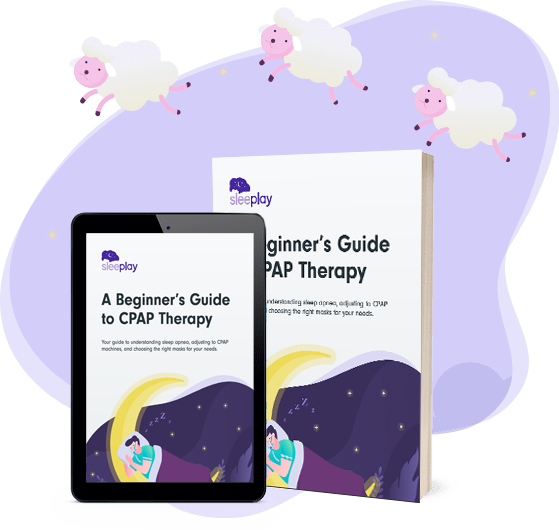
Get your guide to understanding sleep apnea, adjusting to CPAP machines, and choosing the right masks for your needs.



